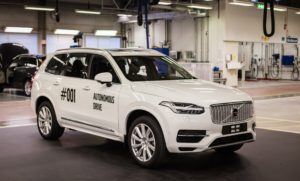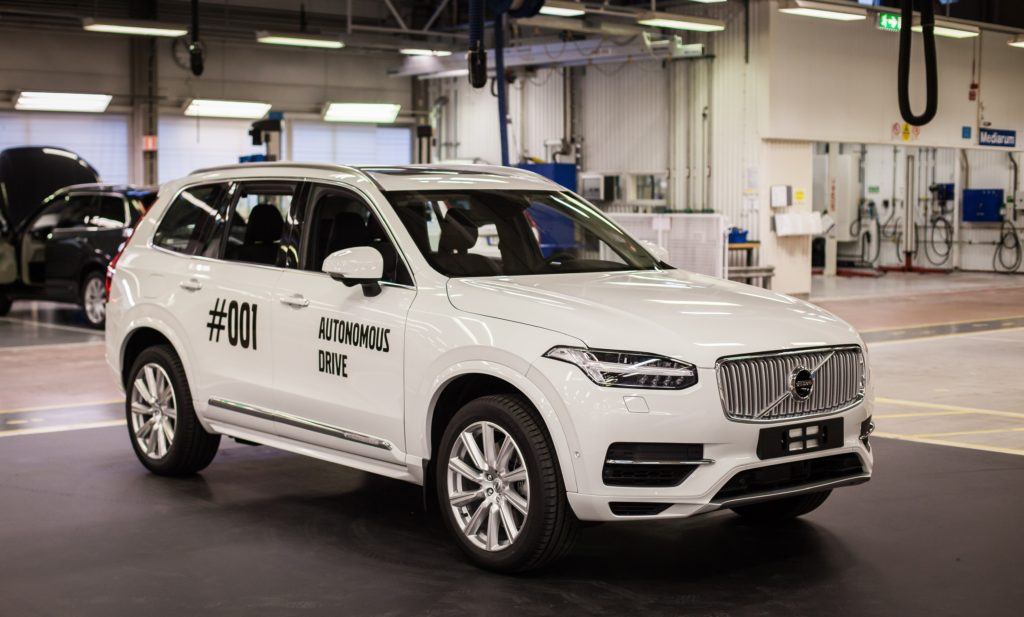Growing megacities, air quality issues, excessive commute times, distracted driving and a desire for constant connectivity are driving the pursuit of autonomous cars.
According to Petter Hörling, director US R&D Tech Centre for Volvo Cars – the company that invented the three-point seatbelt in 1959 – autonomous driving can alleviate the above-described issues.
Hörling, a presenter at the International Association of Claim Professionals’ annual conference held in Sonoma, Calif., said that many autonomous driving initiatives will begin with highway commuting. Offering a separate lane with no pedestrians, bicycles and intersections is an easy way to test self-driving vehicles, he said. Eventually self-driving cars will maneuver in low speed environments, such as during parking maneuvers.
In 2014 Volvo began selling cars with the semi-autonomous Pilot Assist, offering steering assistance to keep the car properly aligned within lane markings without the need to follow another car. The car manufacturer expects to be fully autonomous by 2020, at which time it will take responsibility for the car’s actions.
“Volvo will assume liability for its autonomous technology when used properly,” he said.

The first large scale project for self-driving cars recently kicked off in Gothenburg, Sweden. Drive Me, a public autonomous driving experiment began in September with the completion of the first autonomous Volvo XC90 SUV. It is the first in a series of autonomous cars that will be given to real families in Gothenburg to be driven on public roads, according to a statement released by Volvo USA. The Drive Me cars will add hands-off and feet-off capability in special autonomous drive zones around the city, powered by what Volvo calls the Autonomous Driving Brain.
The car manufacturer expects 100 vehicles to take to the city’s public roads in 2017.
The vehicles have considerable technology, including a camera, radar, LIDAR, map data and a cloud connection to a traffic control center within the city.
The point of the project, Hörling said, is to combine its own engineering research with “feedback and input from real customers using these autonomous cars in their everyday lives.”
A similar project is expected to be launched in London next year and Volvo is considering bids from China cities to launch a future project within the next few years.
The expected effect on insurance is a 10 percent reduction in collision claims in 10 years, a 50 percent reduction within 15 years, and an 80 percent reduction within 20 years. Hörling said remaining crashes will likely occur as a result of an autonomous vehicle’s interaction with old, non-technologically advanced cars.
The global auto manufacturer announced a partnership with Autoliv Inc., a worldwide provider of automotive safety systems to set up a new jointly-owned company to develop advanced driver assistance systems (ADAS) and autonomous drive (AD) systems for use in Volvo cars and for sale exclusively by Autoliv to all car makers globally, with revenues shared by both companies. The new company will be headquartered in Gothenburg, Sweden, and is expected to start operations in the beginning of 2017.
The car manufacturer expects to commercially sell autonomous cars to the public by 2021.
Was this article valuable?
Here are more articles you may enjoy.


 UK to Compel 1,000 Firms to Shore up Cyber Defenses After Hacks
UK to Compel 1,000 Firms to Shore up Cyber Defenses After Hacks  An Unusually Active Hurricane Season Is in Store for the Atlantic
An Unusually Active Hurricane Season Is in Store for the Atlantic  Wall Street Brokers Start Trading Insurer Claims From LA Fires
Wall Street Brokers Start Trading Insurer Claims From LA Fires  State Farm Has Paid $2.5 Billion in Claims for LA Wildfires
State Farm Has Paid $2.5 Billion in Claims for LA Wildfires 